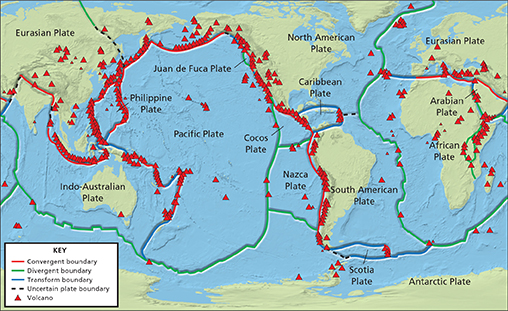Figure 42 Except for hotspot volcanoes, most of the world's volcanoes form near plate boundaries.
Relating Cause and Effect Why are there volcanoes in the middle of the Atlantic Ocean?

Location and Types of Volcanoes
 Most volcanoes occur along plate boundaries or at hot spots in the crust. Volcanoes often form along a converging plate boundary where an oceanic plate is subducted into the mantle. As it sinks through the mantle, the plate causes melting. Magma forms and rises to the surface. As Figure 42 shows, many volcanoes have formed along the trenches that rim the Pacific Ocean. This region is called the “Ring of Fire.” Volcanoes also form along a diverging plate boundary where magma rises to fill the gap between two separating plates.
Most volcanoes occur along plate boundaries or at hot spots in the crust. Volcanoes often form along a converging plate boundary where an oceanic plate is subducted into the mantle. As it sinks through the mantle, the plate causes melting. Magma forms and rises to the surface. As Figure 42 shows, many volcanoes have formed along the trenches that rim the Pacific Ocean. This region is called the “Ring of Fire.” Volcanoes also form along a diverging plate boundary where magma rises to fill the gap between two separating plates.
Some volcanoes occur at hot spots, as shown in the Concepts in Action pages. A hot spot is a region where hot rock extends from deep within the mantle to the surface.
Different types of volcanic eruptions produce different types of volcanoes. Each type is named for its shape or interior structure.  The three major types of volcano are shield volcanoes, cinder cones, and composite volcanoes. A quiet eruption of low-viscosity lava produces a wide, flat volcano called a shield volcano. If an eruption is entirely ash and cinders, the result will be a small, steep-sided volcano called a cinder cone. A volcano that forms from explosive eruptions that produce a combination of lava and ash is called a composite volcano.
The three major types of volcano are shield volcanoes, cinder cones, and composite volcanoes. A quiet eruption of low-viscosity lava produces a wide, flat volcano called a shield volcano. If an eruption is entirely ash and cinders, the result will be a small, steep-sided volcano called a cinder cone. A volcano that forms from explosive eruptions that produce a combination of lava and ash is called a composite volcano.

What is a shield volcano?





